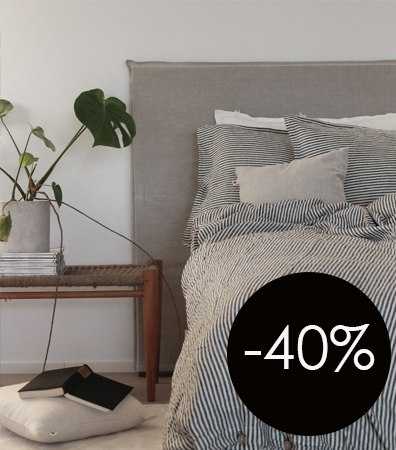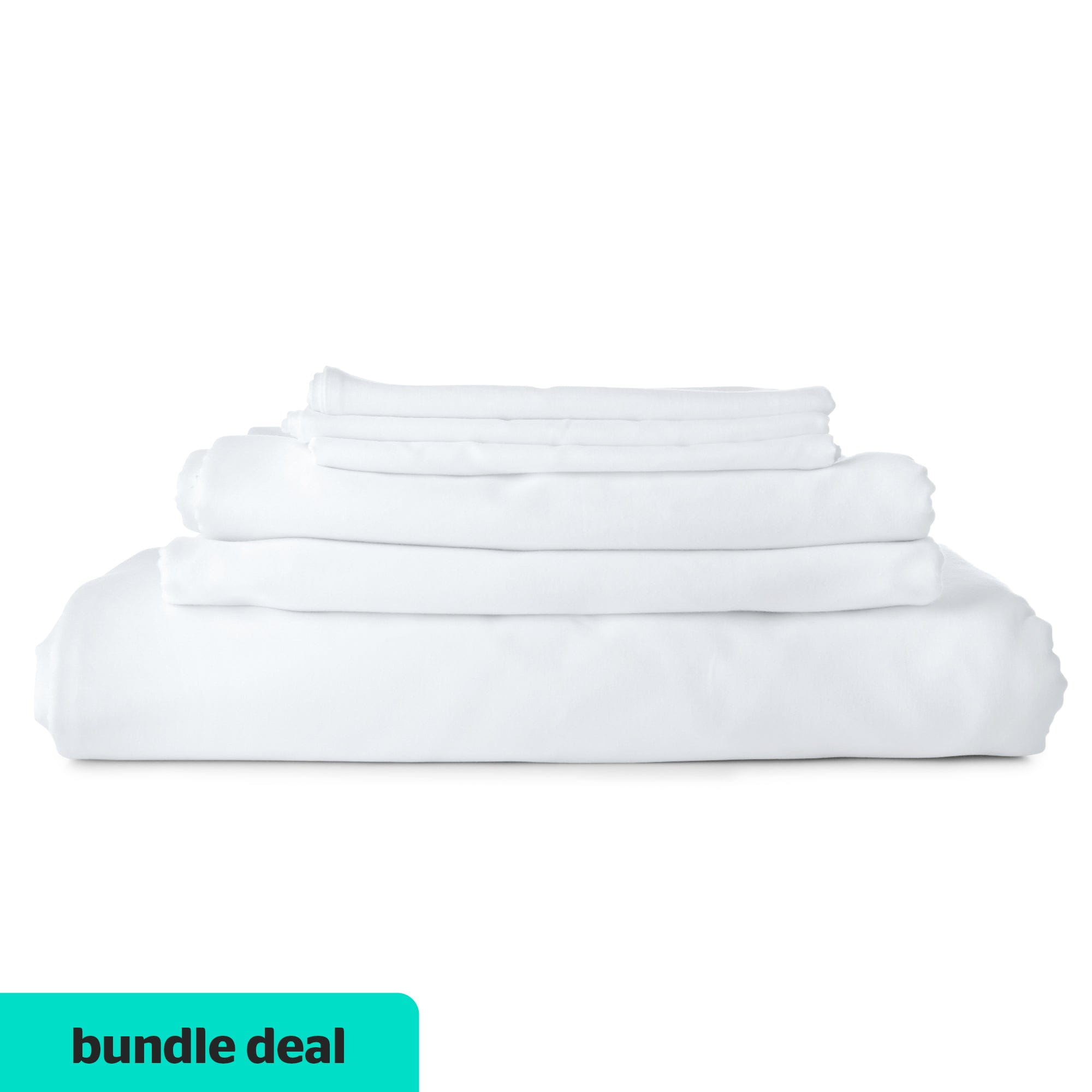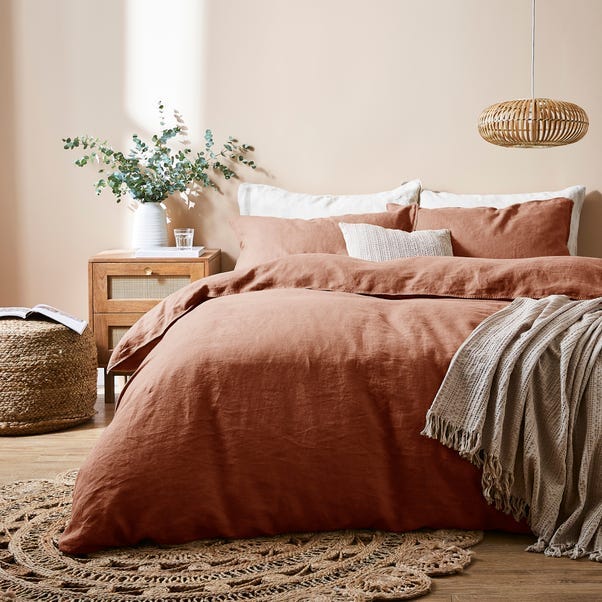Why Linen Australia is the Ultimate Fabric for Coastal Living
Why Linen Australia is the Ultimate Fabric for Coastal Living
Blog Article
Comprehending Linen: The Eco-Friendly Alternative for Comfortable Living
When you think of environment-friendly textiles, linen often stands out for its distinct qualities. This all-natural textile, made from the flax plant, uses both convenience and sustainability. Its exceptional residential or commercial properties make it an ideal choice for cozy climate and resilient use. What truly sets linen apart from various other materials? Recognizing its benefits and origins can transform just how you watch home textiles. Allow's discover the interesting globe of linen better.
The Origins of Bed Linen: From Flax to Fabric

Linen, one of the oldest textiles understood to humanity, has a fascinating trip that begins with the modest flax plant. You might be stunned to find out that this plant grows in cool environments, growing in areas like Europe and parts of Asia. When collected, the flax stalks undergo a process called retting, where they're saturated to separate the fibers from the woody parts. After retting, the fibers are brushed and spun into yarn, ready for weaving.
When you see bed linen fabric, you're seeing centuries of craftsmanship. Linen has been valued for its natural look and feel, making it a favorite for whatever from clothing to home fabrics.
The One-of-a-kind Feature of Bed Linen
Among the standout features of this remarkable textile is its breathability. When you put on linen, you'll notice exactly how it enables air to flow, maintaining you cool down on hot days. This residential or commercial property makes it an ideal choice for summertime garments and bedding.
Bed linen also flaunts phenomenal moisture-wicking capacities, drawing sweat away from your skin and allowing it to vaporize rapidly. You won't feel clammy, even in damp problems. Furthermore, bed linen is durable, frequently becoming softer and more comfortable with each clean, which indicates it can stand the examination of time in your wardrobe.
An additional one-of-a-kind aspect is its natural appearance; the small abnormalities give linen a personality that enhances your style. And also, it withstands creases far better than lots of various other textiles, so you can enjoy a kicked back yet polished appearance without much effort. Embrace linen, and you'll value its comfort and one-of-a-kind appeal.
Ecological Benefits of Linen
When you choose linen, you're not simply deciding for an attractive fabric; you're also sustaining lasting production practices. Bed linen's eco-friendly and compostable nature makes it a clever choice for the environment. Plus, it requires substantially much less water to produce compared to various other fabrics, helping preserve this valuable source.
Sustainable Manufacturing Practices
Although many materials have significant environmental impacts, bed linen stands out due to its sustainable production practices. When you pick linen, you're choosing for a material made from the flax plant, which calls for very little water and chemicals.
Bed linen production is frequently less energy-intensive contrasted to other fabrics, as it involves all-natural procedures instead of artificial therapies. By supporting bed linen, you're adding to a more lasting textile market that prioritizes environment-friendly practices. Picking linen not only enhances your comfort however also straightens your worths with ecological obligation.
Compostable and eco-friendly Product
Bed linen's eco-friendly nature extends beyond its sustainable production; it's compostable and also naturally degradable, making it a superb selection for eco aware customers. When you select linen products, you're opting for products that damage down normally, returning nutrients to the earth. Composting linen can improve dirt, advertising healthy plant growth.
Low Tide Intake
One of the standout benefits of bed linen is its reduced water usage throughout growing. Unlike cotton, which requires substantial watering, linen's flax plant thrives on minimal water, making it a more sustainable selection. You'll appreciate understanding that for every bunch of linen generated, considerably less water is required contrasted to several other fabrics.
Linen vs. Other Fabrics: A Contrast
When you contrast bed linen to other textiles, you'll see its exceptional breathability and convenience, making it perfect for warm weather condition. Plus, bed linen attracts attention for its toughness and longevity, often lasting longer than many commonly used products. As you consider your options, the environmental influence of each material will certainly also play a crucial duty in your decision.
Breathability and Comfort
Breathability is a key consider selecting materials for comfort, especially in warm climate. Linen stands out among products for its amazing capacity to enable air circulation. Unlike synthetic textiles, which can trap warm and moisture, linen's natural fibers wick away sweat, keeping you cool and completely dry. When you put on bed linen, you'll see just how it really feels light against your skin, improving your comfort during warm days.
Cotton is typically applauded for its softness, yet it does not match linen's breathability. If you focus on convenience, especially in summer season, bed linen should be your best option.
Sturdiness and Longevity
While many materials supply differing degrees of longevity, bed linen truly excels in longevity, making it a smart investment for your wardrobe. Unlike cotton or synthetic materials that may wear out rapidly, linen gets stronger with each laundry. You'll discover that linen's breathable nature also decreases wear from sweat and wetness, which can damage various other materials.
Environmental Effect Comparison
Although several materials add to ecological concerns, linen stands apart for its environment-friendly top qualities. Unlike cotton, which calls for substantial water sources and chemicals, linen is made from flax, a plant that thrives on marginal water and needs fewer chemicals. This suggests you can really feel good concerning your choice while lowering your carbon impact.
When compared to synthetic textiles like polyester, bed linen's biodegradability shines. While polyester can take centuries to disintegrate, linen breaks down normally, returning nutrients to the soil.
Picking linen not just promotes lasting farming methods however also supports a much healthier planet. By opting for bed linen over conventional textiles, you're making a mindful choice that profits both your convenience and the atmosphere.
Taking care of Your Bed Linen Textiles
To guarantee your linen textiles continue to be in wonderful problem, you'll want to adhere to some uncomplicated care standards. First, clean your linen in cool water on a gentle cycle to stop it from shrinking or shedding its shape. Prevent making use of bleach, as it can harm the fibers. Rather, choose a light cleaning agent that's without rough chemicals.
When it comes to drying, visit this site air drying is finest. If you make use of a dryer, select a reduced warmth setup and get rid of the items while they're still somewhat damp to decrease wrinkles. Iron the bed linen while it's go to this website still damp for simpler handling, or heavy steam it to keep it looking crisp.
For storage, maintain your bed linen in a cool, dry location. Prevent straight sunshine to stop fading. With these easy methods, your bed linen fabrics will certainly preserve their beauty and last for years, making them a sustainable addition to your way of life.
Integrating Bed Linen Into Your Home Décor
Caring for your linen textiles not only preserves their high quality however likewise opens up a world of possibilities for incorporating them into your home design. You can start small by including linen throw pillows to your couch, promptly boosting the room with structure and heat. Think about bed linen drapes that filter sunshine magnificently, creating a soft, ventilated ambience in any kind of area.
For an extra rustic appearance, try making use of bed linen tablecloths or joggers during dishes; they add an elegant touch and are simple to clean. If you're feeling daring, mix and suit different linen shades and patterns to create an one-of-a-kind, layered result.
Do not ignore linen coverings-- curtain one over a chair or your bed for a welcoming feel. By thoughtfully incorporating bed linen into your style, you enhance both convenience and style, making your home a tranquil resort.
The Future of Bed Linen in Lasting Living
As consumers progressively focus on sustainability, linen becomes a frontrunner in green textiles. Its production makes use of much less water and chemicals contrasted to traditional cotton, making it an extra environmentally accountable selection. As you look towards a lasting future, incorporating linen right into your closet and home can significantly lower your carbon footprint.
Ingenious brand names are now concentrating on lasting practices, from utilizing natural flax to applying circular economic climate concepts. You'll locate that linen's longevity implies it lasts much longer, lowering the need for frequent replacements.
Furthermore, as even more individuals welcome minimalist way of livings, bed linen's timeless allure and versatility will keep it appropriate. By picking bed linen, you're not simply selecting comfort; you're also supporting sustainable methods.
In the upcoming years, the need for bed linen is anticipated to expand, strengthening its area in an extra eco-conscious world. you can check here So, think about making bed linen a staple in your lasting living trip.
Often Asked Concerns
Is Linen Appropriate for People With Allergies?
Yes, linen's natural fibers are hypoallergenic, making it suitable for people with allergies. Its breathable nature helps decrease wetness and germs accumulation, contributing to a healthier sleeping environment. You'll likely find it comfy and secure.
Can Linen Be Colored Quickly?
Yes, you can dye linen easily. Its all-natural fibers soak up dyes well, enabling dynamic shades. Just ensure you utilize the ideal dye kind and follow correct methods to accomplish the desired outcomes without harming the material.
How Does Bed Linen Contrast in Longevity to Cotton?

What Weight of Linen Is Best for Summer Clothing?
For summer season apparel, light-weight bed linen around 4 to 5 ounces per lawn is optimal. It keeps you amazing, breathable, and comfortable in warm climate (Linen). You'll appreciate how it drapes and moves with you easily

Can Linen Be Used for Outdoor Furniture?
Yes, you can use linen for outdoor furniture. It's resilient and breathable, making it a terrific selection for warm climate. Just be certain to pick a dealt with version to stand up to the aspects and preserve its appearance.
Conclusion
Including bed linen into your life not just improves your comfort yet likewise sustains a much more sustainable future. With its one-of-a-kind residential properties and very little environmental influence, linen is a clever choice for your home décor and way of living.
Linen's biodegradable and compostable nature makes it a smart selection for the environment. By including linen right into your home, you're not just appreciating its comfort and longevity; you're likewise sustaining environment-friendly techniques and aiding develop a healthier world. The Future of Bed Linen in Lasting Living.

Report this page